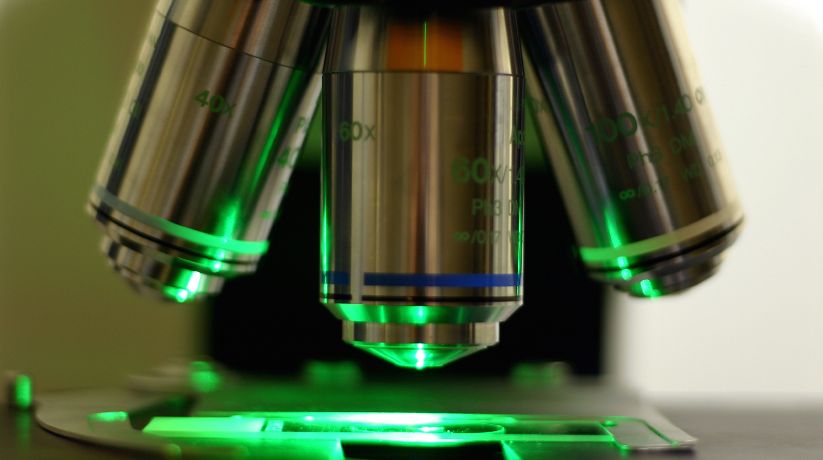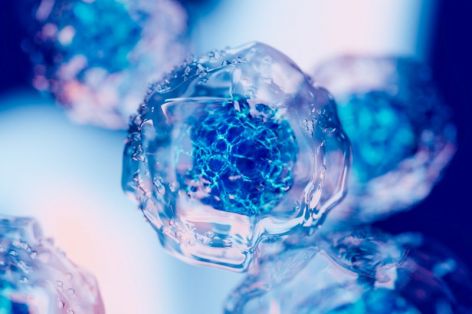Did life on earth evolve by chance (abiogenesis)? The amazing complexity of even the simplest forms of life points to intelligent design in the origin of life.

The Bible claims that life was designed and created by God. But many people throughout history, including the famous Greek philosopher Aristotle, have believed that simple life-forms came about spontaneously.
Spontaneous generation
For example, many believed that fleas could come to life out of inanimate dust and that maggots could spontaneously appear in dead flesh.
In the late 1800s Louis Pasteur’s experiments disproved this theory of spontaneous generation, showing that life only comes from preexisting life of the same kind.
Though science no longer supports the idea of spontaneous generation for any life-form today, a more sophisticated but similar hypothesis is still used for the origin of life. Abiogenesis is part of the theory of evolution that proposes that the first simple life-form developed by natural processes by chance.
Abiogenesis vs. spontaneous generation
Evolutionists differentiate abiogenesis from the disproved and rejected theory of spontaneous generation.
“Although many equate abiogenesis with the archaic theory of spontaneous generation, the two ideas are quite different. According to the latter, complex life (e.g., a maggot or mouse) was thought to arise spontaneously and continually from nonliving matter” (Britannica, “abiogenesis”).
If complex life can’t come from nonliving matter, can simple life? Is simple life really simple?
Abiogenesis definition
Britannica defines abiogenesis as “the idea that life arose from nonlife more than 3.5 billion years ago on Earth. Abiogenesis proposes that the first life-forms generated were very simple and through a gradual process became increasingly complex. Biogenesis, in which life is derived from the reproduction of other life, was presumably preceded by abiogenesis, which became impossible once Earth’s atmosphere assumed its present composition.”
Simple life?
In the 1800s when Charles Darwin proposed his theory of evolution, he did not know that inside a “simple” cell there are complex chemical reactions occurring. But scientists have now discovered that even single-cell life-forms like bacteria are very complex.
Michael Behe, a professor of biochemistry, wrote: “We humans tend to have a rather exalted opinion of ourselves, and that attitude can color our perception of the biological world. In particular, our attitude about what is higher and lower in biology. … Nonetheless, other organisms, if they could talk, could argue for their own superiority. This includes bacteria, which we often think of as the rudest forms of life” (Darwin’s Black Box, 2006, pp. 69-70).
Even though bacteria were thought to be simple forms of life in the past, we now know that they have very complex features like the flagellum. (For more information about the complexity of the flagellum, see the Life, Hope & Truth article “Bacterial Flagellum: Evidence for a Creator.”)
Scientists have discovered that even single cells are very complex.
In order for even a single cell to function, it must be able to “process information, convert energy, metabolize nutrients, build proteins and transport materials across membranes” (William Dembski and Jonathan Wells, The Design of Life, 2008, p. 145). All of these involve very complex functions.
Not only are bacteria extremely complex, but they also occur early in the fossil record, which scientists date to about 3.5 billion years ago. Yet evolutionary theory teaches that the fossil record should start out simple.
The complexity of a single cell
When Darwin wrote On the Origin of Species, science had not advanced nearly as far as it has today. Scientists then could only see some blobs when they looked at the cell. But now we know that there is no such thing as a simple life-form.
Let’s start with the basic building blocks of life. All life depends on proteins, and these amazing molecules have tremendously important functions in the cell. They transport items from one part of the cell to another; they are involved in the reproduction process and much, much more.
Here we have touched on only one component of a cell that is very complex, and it is only today that mankind can begin to understand the interconnected and interdependent aspects of the “simplest” cell.
A protein itself is very complex. Biochemist Michael Denton wrote: “We would notice that the simplest of the functional components of the cell, the protein molecules, were astonishingly complex pieces of molecular machinery” (Evolution: A Theory in Crisis, 1985, p. 329). He also noted that “the task of designing one such molecular machine … would be completely beyond our capacity at present.”
Here we have touched on only one component of a cell that is very complex, and it is only today that mankind can begin to understand the interconnected and interdependent aspects of the “simplest” cell.
Miller-Urey experiment
Attempts have been made to show how the first reproducing cell could have developed by natural methods without a creator. But do these experiments really show how life started?
The Miller-Urey experiment is one that is often quoted in textbooks as giving evidence that life could have evolved by itself. In the early 1950s Stanley Miller, a doctoral student of Nobel-prize winner Harold Urey, conducted an experiment to try to replicate the conditions as they were then believed to have existed on the early earth.
In this famous experiment Miller used a closed glass apparatus and pumped out the air. He then replaced the air with methane, ammonia, hydrogen and water vapor. “He then heated the water and circulated the gases past a high-voltage electric spark to simulate lightning.” Some of the chemicals produced by the experiment included amino acids, which are the building blocks of proteins (Jonathan Wells, Icons of Evolution, pp. 13-14).
Miller-Urey experiment flaws
But there is a major problem with this experiment. Most scientists now believe the earth’s atmosphere did not resemble the mixture of gases Miller used. Sadly, many textbooks continue to assert the importance of this experiment in showing how some building blocks of life could have developed in a primordial soup, ignoring the scientific evidence to the contrary.
In spite of that, let’s say that somehow some of the simplest amino acids were present on the earth early in its history. Life requires many complex proteins. An average protein has hundreds of amino acids. These amino acids would have had to become organized in a very complex, precise way in order to function. The odds of that occurring by chance are astronomical. How then could these amino acids organize themselves randomly to produce a protein—let alone all the proteins necessary for life?
Michael Behe wrote: “In private many scientists admit that science has no explanation for the beginning of life” (Darwin’s Black Box, p. 172). However, in public and on many documentaries they do not give that impression.
We have seen that even the cells found in ancient strata were extremely complex. What does this imply?
In order to explain how a single cell of life could develop, scientists must show how a complex cell can organize itself and reproduce. The complexity involved in even the simplest life-form is staggering. Michael Behe also said, “If they ever do try such an experiment, they will merely be repeating the frustrating work of origin-of-life scientists who have gone before them—and who have seen that complex mixtures yield a lot of muck on the sides of a flask, and not much else” (Darwin’s Black Box, p. 190).
So where did life come from?
We have seen that even the cells found in ancient strata were extremely complex. What does this imply? Consider an analogy:
When we send probes to Mars, do we expect to find a computer running and saying “hello”? If we found such a machine, we would conclude that someone built it. The existence of extremely complex machines anywhere implies design.
The first living, reproducing cell also had to be complex, and all of its functions had to work at once. No one has demonstrated how this first cell could, through chance, acquire the complexity necessary to function.
The evidence of design is demonstrated by the complexity of every form of life, from single-cell organisms to human beings. Life was obviously created by a great Designer. Even at the cellular level, life is extremely complicated; and all explanations about the origin of life by chance fall far short.
For more details, be sure to read our articles “Is God Responsible for the Origin of Life?” “Origin of Life: Are Single Cells Really Simple?” and “God and Science.”





